Kerala PSC Women Police Constable Syllabus 2024
The Kerala Public Service Commission (KPSC) has released the official syllabus for the Women Police Constable recruitment 2024. Downloading and thoroughly reviewing this syllabus is crucial for your exam preparation. A clear understanding of the tested topics will significantly boost your chances of success.
Kerala PSC Women Police Constable Syllabus: Overview
This table summarizes the key details of the Kerala PSC Women Police Constable Exam Syllabus 2024.
| Kerala PSC Women Police Constable Syllabus 2024 | |
| Organization | Kerala Public Service Commission |
| Exam Name | Women Police Constable Exam |
| Name of the Post | Police Constable |
| Category Nos. | 507/2023, 584/23, 732/23, 733/23. |
| Category | Syllabus |
| Mode of Examination | OMR |
| Medium of Questions | Part – I, II, III, V, VI Malayalam/Tamil/Kannada, Part IV – English |
| Total No. of Questions | 100 |
| Total Marks | 100 |
| Negative Marking | 1/3 |
| Duration of Examination | 1 Hour 30 Minutes |
| Official Website | www.keralapsc.gov.in. |
Kerala PSC Women Police Constable 2024 Exam Pattern
The Kerala PSC Women Police Constable Exam follows this format:
- Objective type: The exam will consist of multiple-choice questions.
- Test duration: You’ll have 1 hour and 30 minutes to complete the exam.
- Total marks: The exam is worth 100 marks.
- Marking scheme: Each correct answer earns you 1 mark, while there’s a penalty of 1/3 mark for every wrong answer.
| Sections | Marks |
I. General Knowledge: –
|
40 marks |
| II. Current Affairs | 10 marks |
| III. Arithmetic, Mental ability and Observational Skills Test | 10 marks |
| IV. General English | 10 marks |
V. Regional Languages-
|
10 marks |
| VI. Special Topic –Topics related to the nature of posts (Job-specific) | 20 marks |
| Total | 100 marks |
Kerala PSC Women Police Constable Syllabus 2024 PDF
Download the official syllabus PDF from the Kerala Public Service Commission (KPSC) website or simply click on the below link.
Kerala PSC Women Police Constable Syllabus 2024 PDF
Kerala PSC Women Police Constable Syllabus 2024: Detailed
Access the detailed official syllabus for the Kerala PSC Women Police Constable 2024 exam right here!
Section I: General Knowledge (40 marks)
History (5 marks)
- Kerala – The Arrival of Europeans, Contribution of Europeans, From Marthanda Varma to Sree Chithira Thirunal, History of Travancore, Social, Religious and Renaissance Movements, National Movements in Kerala, Literary Sources of Kerala History, Aikya Kerala Movement, Socio-Political History of Kerala after 1956.
- India – Political History – British Domination – First War of Independence – Formation of Indian National Congress – Swadeshi Movement – Social Reform Movements – Newspapers – Literature and Art of the History of The Independence Day – Freedom Struggle and Mahatma Gandhi – Post-Independence Period of India – Reorganization of States – Progress in the field of Science, Education and Technology – Foreign Policy.
- World – Great Revolution in England – American Freedom Struggle – French Revolution – Russian Revolution – Chinese Revolution – Political History of World War II – United Nations organization and other international organizations
Geography (5 marks)
- Basic principles of geography – Structure of the Earth – Atmosphere – Rocks – Earth’s surface – Atmospheric pressure and wind – Temperature and seasons – Global problems – Global warming – Various types of pollutants – Maps – Topographic maps, signs – remote sensing – Geological information system – Oceans – Oceans – Oceans – Oceans – Oceans – Continents – World nations and their characteristics
- India: Topography – States and their characteristics – Northern Mountain region – Rivers – Northern Ocean – Peninsular Plateau – Coastal – Climate Natural Vegetation – Agriculture – Minerals and Industry – Energy Sources – Road – Water – Rail and Air Transport Systems
- Kerala: Topography – Districts, Features – Rivers – Climate – Natural Flora and Fauna – Wildlife – Agriculture and Research Institutions – Minerals and Systems – Energy Sources – Road – Water, Rail – Air Transport Systems
Economics (5 Marks)
- India – Economy – Five Year Plans – Planning Commission, NITI Aayog, Neo-Economic Reforms, Financial Institutions, Agricultural Crops, Minerals and The Green Revolution.
Constitution of India (8 Marks)
- Constituent Assembly, Preamble, Citizenship- Fundamental Rights- Directive Principles- Fundamental Duties, Elements of Government, Important Constitutional Amendments (42, 44, 52, 73, 74, 86, 91) Panchayati Raj, Constitutional Institutions and their Duties- Union List- State List- Concurrent List.
Kerala – Administration and Administrative Systems (3 Marks)
- Kerala State Civil Service, Constitutional Institutions, Various Commissions, Socio-Economic and Commercial Planning Basic Information, Disaster Management Authority, Wetland Conservation, Employment and Employment, National Rural Employment Schemes, Land Reforms, Protection of Women, Children and Senior Citizens, Social Welfare and Social Security.
Biology and Public Health (4 Marks)
- General knowledge of the human body
- Vitamins and minerals and their deficiency diseases
- Infectious diseases and pathogens
- Health and Welfare Activities in Kerala
- Lifestyle diseases
- Basic Health Knowledge
- Environment and environmental issues
Physics (3 Marks)
- The branches of physics, matter-unit, quantities and quantities.
- Motion- Newton’s laws of motion-third law of motion-momentum- momentum- _ situations where motion- uses the third law of motion, the space advantages of ISRO.
- Mathematical problems using the equation light-lens, mirror-r=2f, various phenomena of light- rainbow-flowers, electromagnetic spectrum, IR Rays-UV Rays-X Rays- Photoelectric effect.
- Sound-different types of waves-the velocity, resonance, and repetitive resonance of light in different mediums
- Force – Different types of forces – Uses and disadvantages of friction – Uses and disadvantages of friction, Liquid pressure – Plasmic force – Archimedes principle – Pascal’s law – Density – Density – Relative density – _ Forces – Corporas – Viscous force – Surface force.
- Centrifugal force, centrifugal force, satellites, migratory velocity mass and weight, the value of g in different places on earth
- Heat -temperature different types of thermometers, humidity -relative humidity
- Working-energy-power-power mathematical problems-catalysts, a variety of catalysts.
Chemistry (3 marks)
- Atom-molecule-different states for matter-transformation-gas laws – _
- Elements- Periodic table- Metals and non-metals- Chemical physical changes- Chemical reactions- Solutions- Mixtures- Compounds
- Metals- Alloys- Alloys, Acid and Alkali- pH value- Alkaloids.
Art, Sports, Literature and Culture (4 Marks)
Art:
- The main visual and auditory arts of Kerala are characterized by their origin, spread and training.
- Famous places
- Famous Institutions
- Famous personalities
- Famous artists
- Famous writers
Sports:
- The leading sportspersons of Kerala, India and the world who have made a mark in the field of sports, their sports, their achievements and the honors they have received.
- Major Awards -The awardees have a knowledge of the field in which each award is given for performance.
- Major trophies
- Major sports events -Number of players participating
- Key terms associated with games
- Olympic Games
- Basic Information
- Main venues/ countries
- Famous victories/ sportspersons
- India’s impressive performances at the Olympics
- Winter Olympics
- Para-Olympics
- Asian Games, Afro-Asian Games, Commonwealth Games,
- SAF Games
- Venues
- Countries
- Remarkable performance by India
- National Games
- Games items – religious events – players, achievements
- National sports/entertainment of each country
Literature:
- Major literary movements in Malayalam -First works, authors
- The main works of each movement are their authors
- Writers-Pseudonyms, Aliases
- Characters-Works
- Famous lines-works-writers
- Those who started malayalam journalism periodicals
- Important Awards Honours -Writers
- eligible for the Award -Works
- Malayalees who have won the Jnanpith Supplementary Facts
- The origins, growth, milestones, major contributors to Malayalam cinema, and the National Award for Malayalam Cinema.
Culture:
- Major festivals and places associated with the celebrations in Kerala Famous festivals.
- Cultural centres, places of worship, cultural heroes of Kerala, their contributions
Section II: Current Affairs (20 Marks)
Section III: Arithmetic, Mental ability and Observational Skills Test
III. A) Simple Arithmetic ( 5 Marks)
- Numbers and Basic Operations
- Fraction and Decimal Numbers
- Percentage
- Profit and Loss
- Simple and Compound Interest
- Ratio and Proportion
- Time and Distance
- Time and Work
- Average
- Laws of Exponents
- Mensuration
- Progressions
III. B) Mental Ability ( 5 Marks)
- Series
- Problems on Mathematics Signs
- Analogy- Word Analogy, Alphabet Analogy, Number Analogy
- Odd man out
- Coding and De Coding
- Family Relations
- Sense of Direction
- Time and Angles
- Time in a clock and its reflection
- Date and Calendar
- Clerical Ability.
Section IV: General English
IV. A) English Grammar (5 Marks)
- Types of Sentences and Interchange of Sentences.
- Different Parts of Speech.
- Agreement of Subject and Verb.
- Articles – The Definite and the Indefinite Articles.
- Uses of Primary and Modal Auxiliary Verbs
- Tag Questions
- Infinitive and Gerunds
- Tenses
- Tenses in Conditional Sentences
- Prepositions
- The Use of Correlatives
- Direct and Indirect Speech
- Active and Passive voice
- Correction of Sentences
- Degrees of Comparison
IV. B) Vocabulary (5 Marks)
- Singular & Plural, Change of Gender, Collective Nouns
- Word formation from other words and use of prefix or suffix
- Compound words
- Synonyms
- Antonyms
- Phrasal Verbs
- Foreign Words and Phrases
- One Word Substitutes
- Words often confused
- Spelling Test
- Idioms and their Meanings
- Expansion and meaning of Common Abbreviations
Section V: Regional Languages-
V. A) Malayalam
- പദശുദ്ധി
- വാക്യശുദ്ധി
- പരിഭാഷ
- ഒറ്റപ്പദം
- പര്യായം
- വിപരീത പദം
- ശൈലികൾ പഴഞ്ചൊല്ലുകൾ
- സമാനപദം
- ചേർത്തെഴുതുക
- സ്ത്രീലിംഗം
- പുല്ലിംഗം
- വചനം
- പിരിച്ചെഴുതൽ
- ഘടക പദം (വാക്യം ചേർത്തെഴുതുക)
V. B) Kannada
- Word Purity / Correct Word
- Correct Sentence
- Translation
- One Word / Single Word / One Word Substitution
- Synonyms
- Antonyms
- Idioms and Proverbs
- Equivalent Word
- Join the Word
- Feminine Gender, Masculine Gender
- Number
- Sort and Write
V. C) Tamil
- Correct Word
- Correct Structure of Sentence
- Translation
- Single Word
- Synonyms
- Antonyms / Opposite
- Phrases and Proverbs
- Equal Word
- Join the Word
- Gender Classification – Feminine, Masculine
- Singular, Plural
- Separate
- Adding Phrases
Section VI. Special Topics (Related to Job) (20 Marks)
Part I. Indian Penal Code, 1860 (4 Mark)
General Exceptions in IPC
- IPC Section 81: Act likely to cause harm, but done without criminal intent, and to prevent other harm
- IPC Section 82: Act of a child under seven years of age
- IPC Section 83: Act of a child above seven and under twelve of immature understanding
- IPC Section 84: Act of a person of unsound mind
- IPC Section 85: Act of a person incapable of judgment by reason of intoxication caused against his will
- IPC Section 88: Act not intended to cause death, done by consent in good faith for the person’s benefit.
- IPC Section 89: An act is done in good faith for the benefit of a child or insane person, by or by consent of the guardian
- IPC Section 92: An act is done in good faith for the benefit of a person without consent
- Sec 268- public nuisance
- 269 – negligent act likely to spread infection of diseases dangerous to life
- 270- Malignant act likely to spread infection of diseases dangerous to life
- 277- fouling water of public spring or reservoir
OFFENCES AGAINST BODY:
| Sections | Topics |
| 299 |
Culpable homicide
|
| 300 | Murder |
| 301 |
Culpable homicide by causing the death of a person other than the person whose death was intended
|
| 302 |
Punishment for murder
|
| 303 |
Punishment for murder by life-convict
|
| 304 |
Punishment for culpable homicide not amounting to murder.
|
| 304A |
Causing death by negligence
|
| 304B | Dowry death |
| 312 |
Causing of miscarriage
|
| 313 |
Causing miscarriage without a woman’s consent
|
| 314 |
Death caused by an act done with intent to cause miscarriage
|
| 319 | Hurt |
| 320 | Grievous hurt |
| 321 |
Voluntarily causing hurt
|
| 322 |
Voluntarily causing Grievous hurt
|
| 323 |
Punishment for Voluntarily causing hurt (Noncognizable)
|
| 324 |
Voluntarily causing hurt by dangerous weapons or means
|
| 325 |
Punishment for Voluntarily causing Grievous hurt
|
| 326 |
Punishment for Voluntarily causing Grievous hurt by dangerous weapons or means
|
| 326A |
Voluntarily causing Grievous hurt by use of acid
|
| 326B |
Voluntarily throwing or attempting to throw acid
|
| 336 |
Act endangering the life or personal safety of others
|
| 337 |
Causing hurt by act endangering the life or personal safety of others
|
| 338 |
Causing grievous hurt by an act endangering the life or personal safety of others
|
| 339 |
Wrongful restraint
|
| 340 |
Wrongful confinement
|
| 341 |
Punishment for Wrongful restraint
|
| 342 |
Punishment for Wrongful confinement
|
| 359 | Kidnapping |
| 360 |
Kidnapping from India
|
| 361 |
Kidnapping from lawful guardianship
|
| 362 | Abduction |
| 363 |
Punishment for kidnapping
|
| 370 |
Trafficking of person
|
| 370A |
The exploitation of a trafficked person
|
| 375 | Rape |
| 376 |
Punishment for Rape
|
| 376A |
Punishment for causing death or resulting in a persistent vegetative state of the victim
|
| 376AB |
Punishment for rape on a woman under twelve years of age
|
| 376B |
Sexual intercourse by husband upon his wife during separation
|
| 376C |
Sexual intercourse by a person in authority
|
| 376D | Gang rape |
| 376DA |
Punishment for gang rape on woman under sixteen years of age
|
| 376DB |
Punishment for gang rape on woman under twelve years of age
|
| 376E |
Punishment for repeat offenders
|
OFFENCE AGAINST WOMEN:
| Sections | Topics |
| 354 |
Assault or criminal force on a woman with intent to outrage her modesty
|
| 354A |
Sexual harassment and Punishment for sexual harassment
|
| 354B |
Assault or use of criminal force on a woman with intent to disrobe
|
| 354C | Voyeurism |
| 354D | Stalking |
| 498A |
Husband or relative of the husband of a woman subjecting her to cruelty
|
| 509 |
Word gesture or act intended to insult the modesty of a women
|
OFFENCES AGAINST PROPERTY:
Theft
- 378: Theft.
- 379: Punishment for theft.
- 380: Theft in dwelling houses, etc.
- 381: Theft by clerk or servant of property in possession of master.
- 382: Theft after preparation made for causing death hurt or restraint in order to the committing of the theft.
Of Extortion
- 383: Extortion.
- 384: Punishment for extortion.
- 385: Putting a person in fear of injury in order to commit extortion.
- 386; Extortion by putting a person in fear of death for grievous hurt.
- 387: Putting a person in fear of death or grievous hurt, in order to commit extortion.
- 388: Extortion by threat of accusation of an offense punishable with death or imprisonment for life, etc.
- 389: Putting a person in fear of accusation of offence, in order to commit extortion.
Of Robbery and Dacoity
- 390: Robbery. When theft is robbery. When extortion is robbery.
- 391: Dacoity.
- 392: Punishment for robbery.
- 393: Attempt to commit robbery.
- 394; Voluntarily causing hurt in committing robbery.
- 395: Punishment for dacoity.
- 396: Dacoity with murder.
- 397: Robbery, or dacoity, with an attempt to cause death or grievous hurt.
- 398: Attempt to commit robbery or dacoity when armed with a deadly weapon.
- 399: Making preparation to commit dacoity.
- 402: Of Criminal Misappropriation of Property
- 403: Dishonest misappropriation of property.
- 404: Dishonest misappropriation of property possessed by the deceased person at the time of his death.
Of Criminal Breach of Trust
- 405: Criminal breach of trust.
- 406: Punishment for criminal breach of trust.
- 407: Criminal breach of trust by carrier, etc.
- 408: Criminal breach of trust by clerk or servant.409: Criminal breach of trust by public, servants. or by banker, merchant, or agent.
Of the Receiving of Stolen Property
- 410: Stolen property.
- 411: Dishonestly receiving stolen property.
THE CODE OF CRIMINAL PROCEDURE. 1973 (3 Mark)
Definitions:
Section 1 Short, title, extent, and commencement.
Section 2 (a) Bailable Offence
Section 2 (c) Cognizable offense
Section 2 (h) Investigation
Section 2 (l) Non-Cognizable offense.
Section 2 (n) Offence.
Section 2 (w) Summons case
Section 2 (x) Warrant Case
Section 4 Trial of offenses under the Indian Penal Code and other laws.
Arrest:
Section 41 When Police may arrest without Warrant.
Section 41 A Notice of Appearance before Police Officer.
Section 41 B Procedure of arrest and duties of an officer making the arrest.
Section 41 D Right of arrested person to meet an advocate of his choice during interrogation.
Section 43 Arrest by private person and procedure on such arrest.
Section 44 Arrest by Magistrate.
Section 46 Arrest How made
Section 50 Person arrested is to be informed of the grounds of arrest and of the right to bail.
Section 51 Search of the arrested person.
Section 53 Examination of accused by medical practitioner at the request of Police.
Section 54 Examination of the arrested person by the medical officer.
Section 57 Person arrested is not to be detained for more than 24 hours.
Section 167 Procedure when investigation cannot be completed in 24 hours.
Section 151 Arrest to prevent the commission of cognizable offenses
Summons and Warrant:
Section 62 Summons how served.
Section 64 Service when persons summoned cannot be found.
Section 66 Service on a government servant.
Section 72 Warrant to whom directed.
Section 74 Warrant directed to Police Officer.
Section 77 Where warrant may be executed.
Information to the Police and their powers to investigate:
Section 154 Information in Cognizable Offences.
Section 155 Information as to non-cognizable cases and investigation of such cases.
Section 156 Police officer’s power to investigate cognizable cases.
Section 157 Procedure for investigation.
Section 160 Police officers power to require the attendance of witnesses.
Section 161 Examination of Witnesses by Police.
Section 164 Recording of confession and statements.
Section 174 Police to enquire and report on suicide etc.
Section 177 Ordinary Place of Inquiry and Trial
Section 178 Place of inquiry or trial
Section 179 Offences trial where an act is done or consequence ensures
Section 180 Place of trial where the act is an offense by reason of relation to other offenses.
Section 181 Place of trial in case of certain offenses
Section 183 Offences committed on journey or voyage
Indian Evidence Act 1872 ( 2 Mark):
Sec 1- Short title, extent, and commencement.
Sec 27 – How much information received from the accused may be proved?
Sec 32 – Case in which statement of relevant fact by a person who is dead or cannot be found, etc is relevant.
Sec 45 – Opinion of Experts.
KERALA POLICE ACT 2011 ( 3 Mark):
Sections:
1. Short title, extent, and commencement
3. General duties of police.
4. The functions of the police.
7. Citizens have the right to efficient police service.
8. Right of the Public at Police Stations
14. Kerala Police.
21. Special wings, Units, Branches Squads.
29. Behaviour of Police Officers.
31. Police to keep the information confidential.
33. Police and the public may keep audio or video or electronic records.
37. Entry in private places.
38. Police to interfere in preventing Offence.
39. Lawful directions of Police to be complied with
57. Police attempt to locate missing persons.
61. Police to regulate and control traffic.
64. Community Policing.
69. Action on the occasion of fire, disaster, or accident.
77. Regulating nuisance caused by noise.
98. Special Police Officers.
117. Penalty for interfering in the functions of the police.
118. Penalty for causing a grave violation of public order or danger
119. Punishment for atrocities against women
120. Penalty for causing nuisance and violation of public order
I. The Narcotic Drugs and Psychotropic Substances Act, 1985 ( 2 Mark):
Chapter I Short Title, extent, and Commencement
Chapter IV Offences and Penalties
Sec 25- Punishment for allowing premises etc. to be used for the commission of an offense
Sec 27- Punishment for consumption of Narcotic drugs or psychotropic substances
Sec 28- Punishment for attempt to commit offenses
Sec 31 A- Death penalty for certain offenses after a previous conviction
Sec 37. Offenses to be cognizable and non-bailable
Chapter VA
Forfeiture of illegally acquired property
Sec 68 F Seizure or freezing of illegally acquired property
THE PROTECTION OF CHILDREN FROM SEXUAL OFFENCES ACT,2012 ( 2 Mark):
Section 1 Short, title, extension, and commencement
Section 3 Penetrative Sexual Assault
Section 4 Punishment for Penetrative Sexual Assault
Section 7 Sexual assault
Section 8 Punishment for sexual assault.
Section 11 Sexual harassment
Section 12 Punishment for sexual harassment.
Section 16 Abetment of an offense.
Section 22 Punishment for false complaints or false information.
Section 23 Procedure for media.
THE INFORMATION TECHNOLOGY ACT.2000 ( 2 Mark):
Section 43 Penalty and Compensation for damage to the computer, computer system, etc.
Section 43A Compensation for failure to protect data.
Section 65 Tampering with computer source documents.
Section 66 Computer-related offenses
Section 66B Punishment for dishonestly receiving stolen computer resources or communication devices.
Section 66C Punishment for identity theft.
Section 66D Punishment for cheating by personation by using computer resources.
Section 66E Punishment for violation of privacy.
Section 66F Punishment for cyber terrorism.
Section 67 Punishment for publishing or transmitting obscene material in electronic form.
Section 67A Punishment for publishing or transmitting material containing the sexually explicit act, etc in electronic form
Section 67B Punishment for publishing or transmitting material depicting children in sexually explicit acts, etc in electronic form
Section 72 Penalty for breach of confidentiality and privacy.
Section 77B Offences with 3 years imprisonment to be bailable.
THE RIGHT TO INFORMATION ACT, 2005 ( 2 Mark):
Section 2(f) Information
Section 8 Exemption from Disclosure of Information
Section 9 Grounds for rejection to access in certain cases.
Section 11 Third-party information
Related Posts:

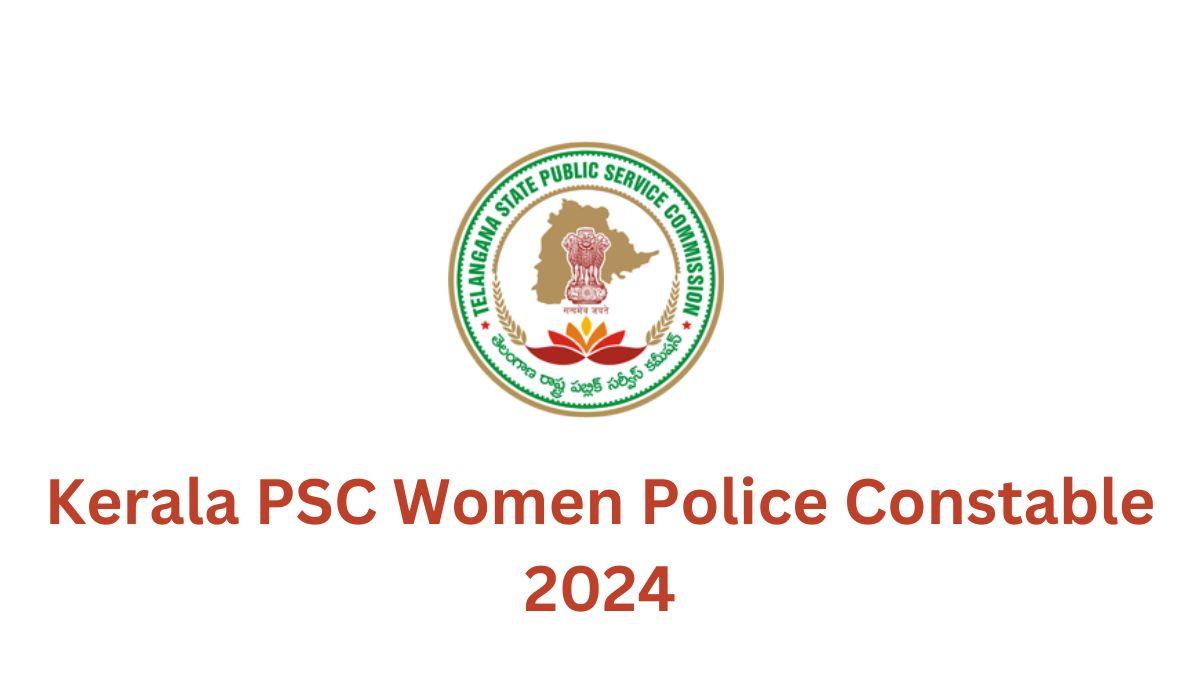


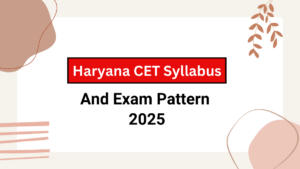 Haryana CET Syllabus 2025 And Exam Patte...
Haryana CET Syllabus 2025 And Exam Patte...
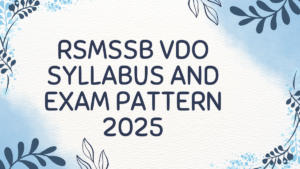 RSMSSB VDO Syllabus And Exam Pattern 202...
RSMSSB VDO Syllabus And Exam Pattern 202...
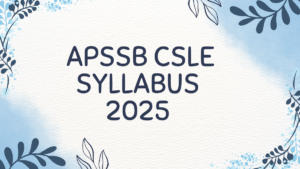 APSSB CSLE Syllabus 2025, Download Combi...
APSSB CSLE Syllabus 2025, Download Combi...

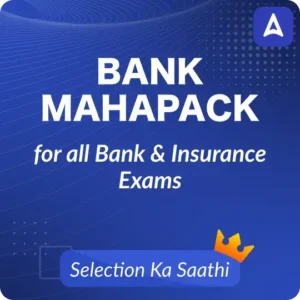
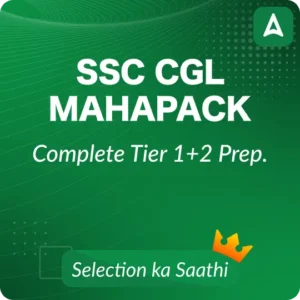
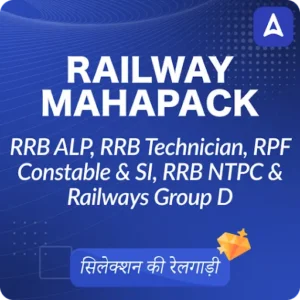
 Adda247 Job portal has complete information about all Sarkari Jobs and Naukri Alerts, its latest recruitment notifications, from all state and national level jobs and their updates.
Adda247 Job portal has complete information about all Sarkari Jobs and Naukri Alerts, its latest recruitment notifications, from all state and national level jobs and their updates.